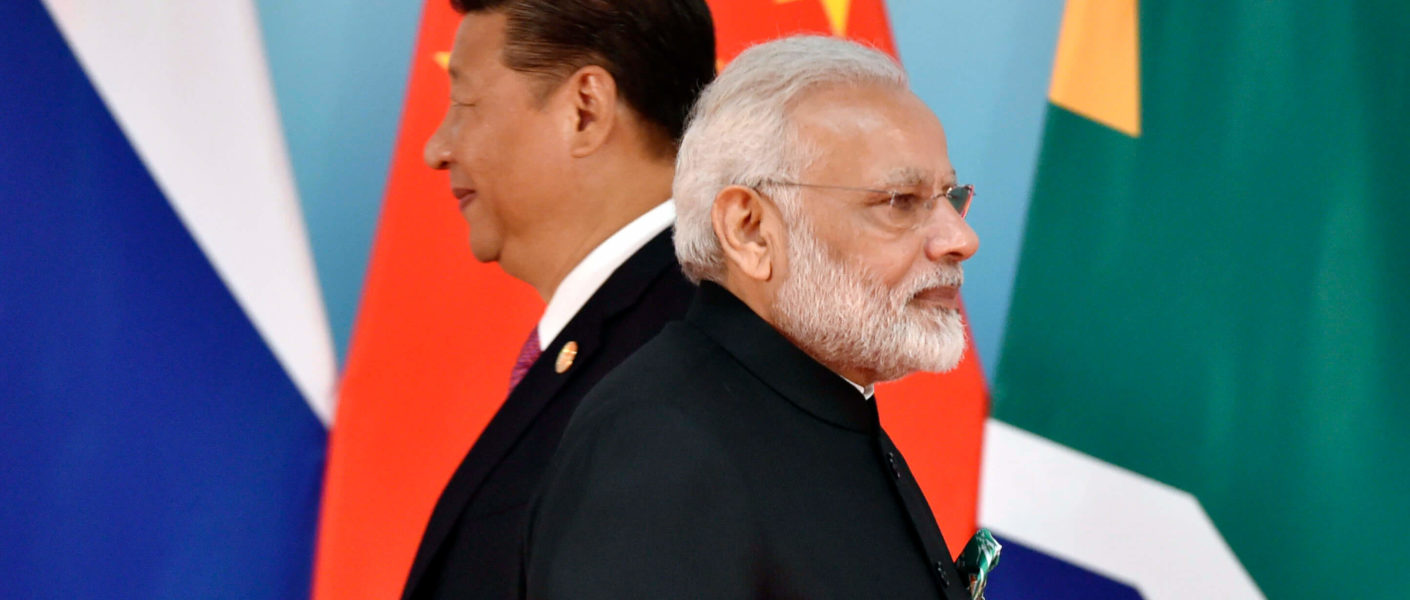Referred to as Sino-Indian relations, India-China relations can be traced back to ancient times. The Silk route led to significant economic, bilateral ties between the two countries. India and China have recently held eight rounds of the Corps Commander talks, and the last one took place on November 6th, 2020. Although both sides stress step-wise de-escalation in Line of Actual Control (LAC) as a priority there have been no meaningful results.
Background
The background is that China and India both are major forces in the Asian Sub-continent. In 1980 India’s GDP per capita was slightly higher than China. Post that, the Chinese economy grew exponentially and the Chinese manufacturing sector is presently eight times the size of Indian manufacturing. Despite this, India and China are always compared and the current ties between Sino-Indian relations are a topic of interest to many as the two giants clash.
After recent scuffles in Galwan and Pangong Tso in the month of June, India has sought restoration of the status quo as it existed before the standoff began in May 2020. The first round of talks happened on 6th June 2020 after which Galwan clash took place and 20 Indian soldiers suffered casualties. Since 1975 face-offs have occurred several times at LAC but there had been no instances of firing.
India’s Reaction:
India has moved in additional troops at LAC to match Chinese deployments. India also approved the purchase of 33 Russian fighter jets and invested at Rs. 18,148 crore on up-gradation of warplanes. Indian Government also banned 59 apps of Chinese origin, citing the emergent nature of threats from China. India’s trade deficit with China fell to $48.66 billion in 2020 due to the decline in imports. China’s Foreign Direct Investment (FDI) in India has dipped to $163.78 million this year from $229 million in the previous year. Government approval was made mandatory for FDI in India from the countries that shared borders with India.
But India is still dependent on Chinese products in several critical and strategically sensitive sectors, from sectors like semiconductors, pharmaceuticals, and telecom.
China’s Reaction:
While the Republic of China pronounced the app ban action from India as interference in the practical cooperation of India and China. They have warned of economic repercussions.
Why is China increasing deployment along LAC?
- India decided to strengthen its border infrastructure through the Darbuk-Shyok-Daulat Beg Oldie road, which is being worked upon on the Indian side of the border.
- Also during the last year, India’s ties with United States have improved while there have been strong tensions between US and China.
- China probably considers India’sstand on Gilgit-Baltistan, as an embedded attack on the China-Pakistan Economic Corridor (CPEC).
- China has been trying to devise strategies and is confident in presiding over the South China Sea.
- Also due to the fact that India as power is growing in the Asian region, China sees India as a threat.
- India is divided into three sectors along the LAC.
- Eastern sector which spans Arunachal Pradesh and Sikkim and stretches 1346 km
- The middle sector in Uttarakhand and Himachal Pradesh spanning 545 km,
- Western sector in Ladakh that expands to 1597 km
The arrangement of the LAC in the eastern stretch is at McMahon Line. But McMohan line manifested earlier had undefined borders. The middle sector also has disputes but western sectors see the highest contraventions.
Border Negotiations:
- There have been negotiations about the Indian Prime Minister’s visit to China in 2003. Consequently, there were political and principle agreements between the two. The social representatives were appointed to find a comprehensive solution encompassing all three sectors for the interests of the population settled there.
- In 2015 China rejected the proposal to clarify the LAC. But in the Wuhan (2018) and Mahabalipuram (2019), summit China and India had confirmed to make efforts towards peace.
Way Forward
- India China ties have completed about 70 years and such standoffs have created precarious situations nullifying the painstakingly confidence-building mechanisms contributed by both sides during all these years.
- India’s first priority is to restore the status quo ante as it existed in April. This might need facing Chinese aggression, and diplomatic talks. But India cannot afford to break off economic links from China in this wake. Chinese finance helps India as a start-up economy. Yet Modiji’s Atmanirbhar Bharat Abhiyan can be a stepping stone to replace Chinese dependency where it is possible. This step forth also requires India to boost up its economic ties with other countries of the world.
Looking at the past and the current developments, all of the above steps seem to have favored India and India seems to be ready to convert this into an opportunity. Here are a few points that might come out well and boost India’s relations and trade with the rest of the world.
Points for India
- India has a Better Workforce
India has the advantage of a greater, young, and English speaking workforce. This is more relevant in terms of opportunities in the Global Market. China had a single child policy in the past putting a shortage in labor and a hike in labor costs in China. This will easily pass the advantages to India in terms of trade benefits.
- Political Business of Chinese Government
In China business is more politicized. Among the companies listed in China’s stock market, 90 percent of companies are partially or wholly state owned. The banks also continue to patron and favor investments into SOEs (State Owned Enterprises). The Chinese officials are also not impartial when it comes to their financial involvement in these companies. For China trade is a weapon. But India’s business is mostly market controlled and is favorable for world economies to invest.
- Less Balanced Growth
Being a very large manufacturing based economy; China has to depend much on exports and investment for its growth. A balanced growth can only be achieved in China by the increase in private consumption. India is already a consumer based economy and buys more than it sells in the world. Indian markets are hence not as vulnerable to the shocks from the international economy.
- China’s Social and Economic Reforms
China is moving towards freeing its financial markets now. Steps are being taken to open larger foreign ownership in Chinese companies. One child policy has been withdrawn and Yuan convertibility has been removed.
India is already ahead of China in terms of these reforms. For the Indian economy interest rates are market controlled. Government borrowing costs are market determined. Indian government bonds are one of the most liquid in Asia, regulated by the RBI. As far as stock markets are concerned Indian markets follow global standards. China still needs to catch up for the pace to reach the standards India has achieved and needs to be more committed to economic and financial market reforms.
- Communism
China is a non-democratic country, and decisions come from the top. The wrong decisions perhaps are very hard to correct. The Chinese economy has compromised on human rights for that extra growth of GDP that they have accomplished. Companies and media do not have a free hand in this economy and this is not a healthy sign for trade between countries.
Economists appreciate Democratic economies. It lets free speech, proper elections, liberated media, and independent judiciary, all of which lead to a friendly business terminus.
- Apprehensive Data of Chinese Economics
Quite often, the question is raised about China’s current account surplus because their Yuan’s value is managed by peg, but the Indian rupee is mostly determined by the market and keeps appreciating and depreciating. China’s National Bureau of Statistics acknowledged faking economic figures by the government instructions. The inflated figures were presented for seeking loans from state owned banks. China’s economic data is thus doubtful due to poor transparency policies.
In the case of India, reports are available to everyone to see and analyze. So it is easy to put out independent data analysis in India. The world can choose to look at the available information and use it to its advantage.
Points against India
Although there are several factors favoring India in this tiff of trade and land between India and China there are other reasons like infrastructure, inflation, depreciating Indian currency, and the growing stability of the Indian economy that downcasts India in front of China for trades and business.
Conclusion
These tensions have precisely drawn our attention towards our economic dependencies on China. Owing to the huge capital investments and increasing GDP, China seemed to be a more favorable investment place in the world. Yet, post covid conditions, many countries, and companies have started disinvesting from China creating an advantageous situation for India in terms of Trade benefits. But the border tensions are constantly high and the escalation might lead to a big war, which should be avoided by both countries for sustainable growth.




